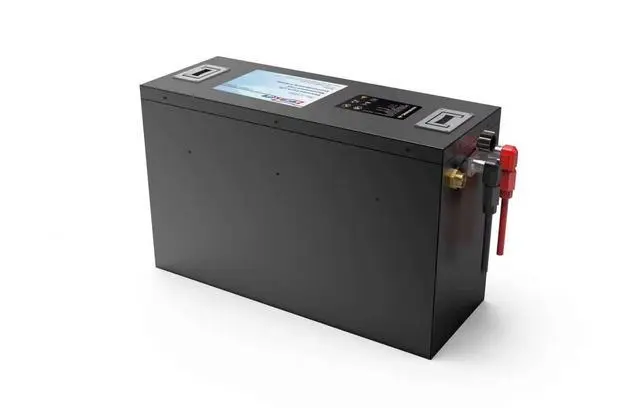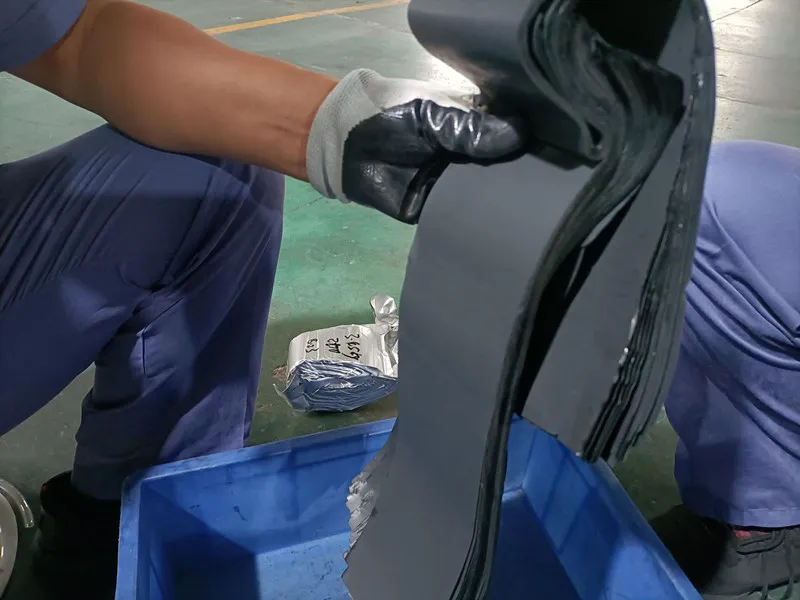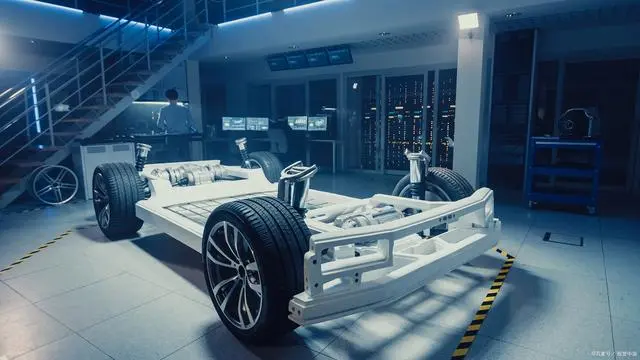Lithium iron phosphate is a lithium-ion battery electrode material with the chemical formula LiFePO4 (LFP for short). It is mainly used in various lithium-ion batteries. Since Japan’s NTT first revealed the olivine structure lithium battery cathode material of AyMPO4 (A is an alkali metal, M is a combination of CoFe: LiFeCoPO4) in 1996, in 1997, John. B. Goodenough and others from the University of Texas at Austin in the United States studied The group also subsequently reported the reversible transfer of lithium into and out of LiFePO4.

The United States and Japan coincidentally published the olivine structure (LiMPO4), which attracted great attention to this material and caused extensive research and rapid development. Compared with traditional lithium-ion secondary battery cathode materials, spinel structure LiMn2O4 and layered structure LiCoO2, LiMPO4 has wider sources of raw materials, is cheaper and has no environmental pollution.
Basic characteristics of lithium iron phosphate
Lithium iron phosphate is currently the most promising cathode material in lithium-ion batteries. Compared with other cathode materials, it has the following advantages:
(1) Low cost. Compared with ternary cathode materials, lithium iron phosphate is relatively cheap, has a relatively simple production process, and causes little environmental pollution.
(2) The battery has good safety. Lithium iron phosphate materials do not contain heavy metal elements that are harmful to the human body. They will not produce harmful gases at high temperatures, nor will they produce poisonous gas, acid mist and other substances.
(3) Long cycle life. The cycle life of lithium iron phosphate is usually more than 500 times, which is much higher than that of ternary lithium, and its service life can reach more than 10 years.
(4) Excellent electrochemical performance. Lithium iron phosphate materials have high cycle performance and rate performance, and can maintain good performance under low temperature conditions.

When a short circuit occurs in the lithium iron phosphate cathode material, it will not cause dangerous situations such as burning or explosion, nor will it produce toxic gases, acid mist, or poisonous gases and other substances.
Preparation method of lithium iron phosphate
At present, the preparation methods of lithium iron phosphate materials mainly include high-temperature solid-phase synthesis, co-precipitation, sol-gel and hydrothermal methods.
High-temperature solid-phase synthesis method: The high-temperature solid-phase synthesis method refers to the preparation of lithium iron phosphate materials with specific morphology by controlling reaction conditions at room temperature. The main principle of high-temperature solid-phase synthesis is to use the heat released when the carbon source is decomposed to carry out the reaction at low temperature.
By controlling the reaction conditions, the morphology, particle size, crystallinity and crystal structure of lithium iron phosphate can be controlled, thereby preparing lithium iron phosphate with different morphologies and crystal forms.
The advantage is that the production cost is low, but the high-temperature solid-phase synthesis method has many shortcomings. For example, if the temperature is too high, the material grains will grow, resulting in poor material performance; the price of raw materials is high, and the production cost is large; during the preparation process It is easy to generate waste such as waste liquid and waste residue.
Precipitation method: Mix the raw materials evenly in a certain proportion, add appropriate additives, react at a certain temperature, filter, wash, and dry to obtain lithium iron phosphate products. The co-precipitation method has a simple production process and can control the morphology and particle size of the product. It is currently the most widely used preparation method. The performance of lithium iron phosphate products prepared by co-precipitation method is relatively stable.
Sol-gel method: refers to first mixing the carbon source and the aluminum source and then adding them to the organic solvent for stirring and raising the temperature until it reaches a predetermined temperature; then the solution is filtered and washed, dried, dispersed and ground at low temperature to prepare nano-iron phosphate. lithium. The lithium iron phosphate synthesized by this method has fine grains, high crystallinity and stable performance. However, the sol-gel method has high cost, complicated preparation process, and serious problems of product agglomeration.
Advantages and disadvantages of using lithium iron phosphate materials to produce power batteries
Advantages of lithium iron phosphate materials: Lithium iron phosphate materials have the advantages of large specific capacity, long cycle life, low voltage platform, high safety, and strong environmental adaptability. They are considered to be one of the most promising lithium-ion battery cathode materials. . In addition, it also has the characteristics of low price and wide source.
Problems with lithium iron phosphate materials: phosphoric acid crystals are easily formed during the preparation process of lithium iron phosphate materials, which reduces its conductivity; the crystal structure of lithium iron phosphate changes greatly at high temperatures and has poor stability; it is prone to volume changes, leading to capacity attenuation; and Organic acids generated by electrolyte reactions can also adversely affect battery performance.
Measures to improve the performance of lithium iron phosphate materials: Improving the specific surface area and particle size of lithium iron phosphate materials are important measures to improve the electrochemical performance of lithium iron phosphate materials. Research shows that as the particle size and specific surface area increase, the electrochemical performance of lithium iron phosphate materials also increases. In addition, optimizing the electrolyte and binder is also an important means to improve the performance of lithium iron phosphate batteries.
Lithium iron phosphate market demand is growing rapidly
New energy vehicles continue to be booming
The global new energy vehicle industry is entering a new stage of accelerated development, which not only injects strong new momentum into the economic growth of various countries, but also helps reduce greenhouse gas emissions, cope with climate change challenges, and improve the global ecological environment.
Starting from 2021, the average carbon dioxide emissions of new passenger cars in the EU shall not be higher than 95 grams per kilometer. By 2025 and 2030, they will need to be reduced by 15% and 37.5% respectively on this basis.
On March 31, the Biden administration in the United States announced that it would allocate US$174 billion to support the development of the new energy vehicle industry, of which US$100 billion will be used directly for consumer subsidies. The State Council of China plans that by 2025, new energy vehicle sales will account for about 20% of total new automobile sales. (Report source: Future Think Tank)
The future of energy storage market is promising
Judging from the degree of technology commercialization at the end of 2020, lithium batteries are still the most mature new energy storage technology with the highest application proportion (nearly 90%).
The “New Energy Storage Guidance Opinions” points out that from 3.28GW at the end of 2020 to 30GW in 2025, in the next five years (2020~2025), the scale of my country’s new energy storage market will expand to 10 times the current level, with an average annual compound growth rate of more than 55%.
According to CNESA predictions, the compound growth rate of electrochemical energy storage will remain at around 57% under conservative scenarios, and will exceed 70% under ideal scenarios, that is, the total installed energy storage capacity will reach 35.5GW and 55.8GW respectively by 2025.
With the development of use scenarios such as new energy power generation and energy storage and household energy storage, the cost advantage of lithium iron phosphate has become more prominent. The decreasing cost of lithium iron phosphate batteries is expected to open up a huge lead-acid battery replacement market.
Phosphorus and iron resources are indispensable, and integration cost is king
Lithium iron phosphate drives up the demand for iron phosphate. Short-term iron phosphate supply and demand are tightly balanced, and long-term supply is loose. According to statistics from Baichuan Yingfu, as of September 2021, my country’s iron phosphate production capacity is 356,000 tons, the operating rate of enterprises continues to increase, and supply and demand are tightly balanced. Assuming that 80% of future lithium iron phosphate demand will be realized through the iron phosphate process path, the global demand for lithium iron phosphate of 2.724 million tons in 2025 will correspond to approximately 2.09 million tons of iron phosphate demand. According to the iron phosphate production capacity plan as of September 2021, it will exceed 300 tons. million tons, we expect sufficient supply of iron phosphate in the long term.
Iron source: Titanium dioxide companies have the advantage of iron source when entering the lithium iron phosphate business
Titanium dioxide companies have zero-cost iron sources and enjoy synergistic effects. Ferrous sulfate, a by-product of the sulfuric acid titanium dioxide enterprise, is the source of iron in the raw materials for lithium iron phosphate production. The production of a single ton of titanium dioxide can produce approximately 3 tons of ferrous sulfate. It is difficult to process a large amount of ferrous sulfate solid waste. Stacking and disposal causes environmental pollution problems and wastes resources. After pre-treatment, ferrous sulfate solid waste can be used to produce battery-grade iron phosphate, and then produce lithium iron phosphate battery materials, which improves resource utilization, reduces the raw material cost of lithium iron phosphate production, and has significant synergistic effects. Calculated based on the average raw material market price in 21H1, iron source supply can save 1,676 yuan per ton cost compared to iron source outsourcing enterprises. As the process path for ferrous sulfate to prepare lithium iron phosphate battery materials is gradually opened up, it has brought opportunities to the entire titanium dioxide industry. Some companies have taken away purified ferrous sulfate products, while other companies have taken advantage of their resource advantages to seize the opportunity to enter new energy batteries. materials field.

Phosphorus source: Phosphorus chemical companies have cost advantages when entering the lithium iron phosphate industry
Phosphorus source supply companies have greater cost advantages. According to the calculation of the average market price in 21H1, if 85% high-purity phosphoric acid is purchased as the phosphorus source, the phosphorus source cost of a single ton of lithium iron phosphate is approximately 4,124 yuan. For phosphate rock resource enterprises that use wet purification technology to produce phosphoric acid by themselves, the cost per ton is The cost of phosphorus source per ton of lithium iron phosphate is about 1,989 yuan/ton. Lithium iron phosphate companies that provide their own phosphorus sources have a cost advantage of about 2,135 yuan/ton. Compared with titanium dioxide companies that provide iron sources, they have a greater cost advantage.
Lithium iron phosphate has greatly increased the added value of phosphorus resources. In the traditional agricultural fertilizer field, a single ton of agricultural fertilizer monoammonium phosphate requires about 1.75 tons of phosphate rock, and a single ton of phosphate rock can generate a profit of about 172 yuan. The unit consumption of lithium iron phosphate phosphate ore is about 2.26 tons. According to the 21H1 average market price, the industry profit of a single ton of lithium iron phosphate is about 4,439 yuan, so a single ton of phosphate ore corresponds to a profit margin of 1,964 yuan. Lithium iron phosphate has a high added value and can bring more than 10 times the income of agricultural fertilizers, opening a window for valuation improvement for phosphorus chemical companies.
Phosphorus chemical companies have phosphorus resources and technology accumulation. High-purity phosphoric acid for batteries or industrial-grade monoammonium phosphate is an important phosphorus source material in the production of lithium iron phosphate. Traditional phosphorus chemical companies have phosphorus resource advantages; in the short term, companies with high-purity ammonium phosphate/industrial-grade ammonium phosphate production capacity will have iron phosphate Direct phosphorus source of lithium, mastering resources and technological advantages.
